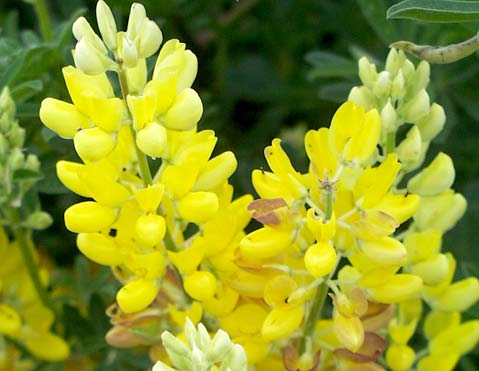Blooming Lupines
Wildflowers Abound this Spring

The wildflowers are beginning to bloom, and it looks like a stellar year due to the lovely soaking rains. Some of the first to appear locally are the various species of lupine. While there are a number of different ones in our area, they all display the same showy flower structure and distinctive leaf shape. Flower stalks may be as tall as three feet or as diminutive as six inches in height, sporting whorls of showy flowers shaped like miniature sweet peas. The bicolored flowers are white and usually some shade of blue, but lavender, pink, pure white, or yellow also exist. Lupine leaves are divided into many leaflets that spread out from a central node. In some species, those more adapted to desert climates, they are covered with pale hairs.
While most lupines are annuals, California has a widespread shrubby species, Lupinus arboreus. This species occurs as either blue-flowered or yellow-flowered, but the stature of the woody shrubs is unmistakable. Usually about three feet high and wide, they can be totally missed unless covered in their lovely blooms. A small remnant population near Nipomo is one of my favorite springtime sightings as I drive north on Highway 101. Scattered across a pasture (horses have been also sighted) just beside the highway, these yellow-flowering forms of bush lupine are a welcome respite on a pretty boring stretch of roadway.
There are other places to view these cheery harbingers of spring. Lupines abound just now along Highway 192 between Montecito and the mission. They will soon clothe the slopes of Figueroa Mountain and appear in the meadow at the Botanic Garden and nearly everywhere that wildness still exits. You can grow a few of them in the garden, but it is infinitely more satisfying to venture out and see them in abundance in their native habitats. Pack a picnic and risk a case of spring fever.



